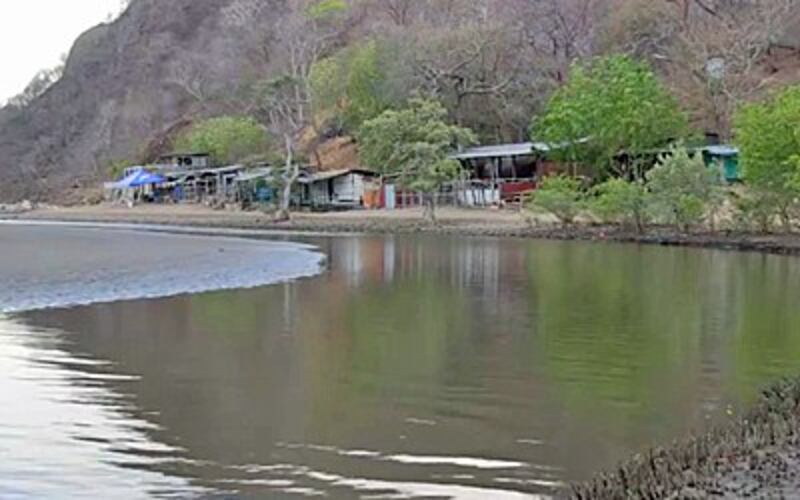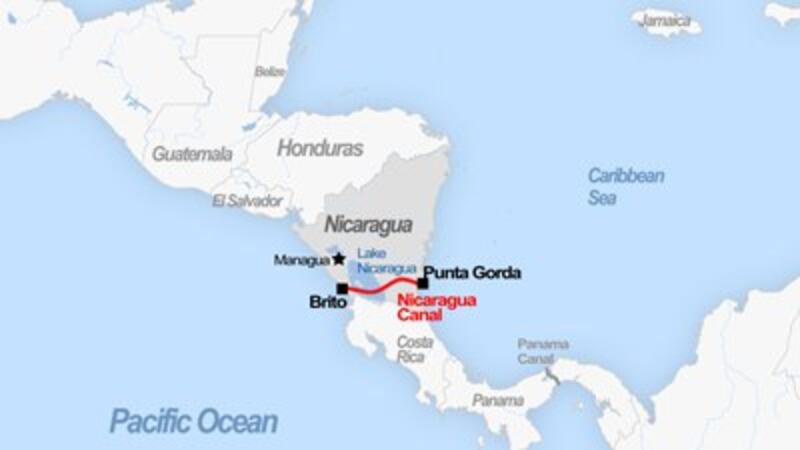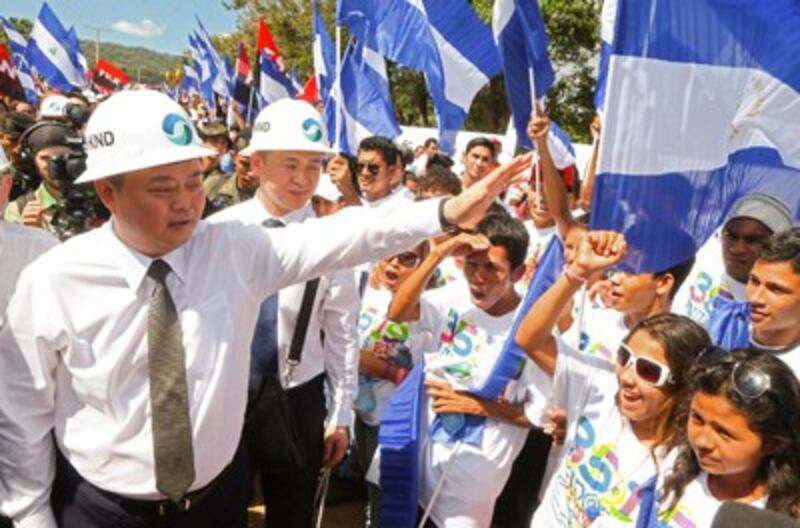A controversial Chinese-financed multibillion-dollar mega-canal project in Nicaragua will reportedly bring tens of thousands of jobs to the second-poorest nation in the Americas but at a cost of environmental damage, lost species and forced relocations.
The Hong Kong Nicaragua Canal Development Investment Company Ltd. (HKND), run by Chinese telecom magnate and billionaire Wang Jing, formally broke ground on the 172-mile, U.S. $50-billion Grand Inter-Oceanic Canal last December with the blessing of the Nicaraguan government.
When completed, the world’s largest construction project will bring prosperity and happiness to the Nicaraguan people, according to President Daniel Ortega.
But not all environmentalists and villagers who live along the proposed route of the canal are buying it.
The coast-to-coast canal project will destroy pristine forestland as well as the habitats of many species, they say, to accommodate not only the canal itself, but also the new roads, power plants, an international airport, two ports, tourist resorts, a ferry terminal and a free trade economic zone that will accompany it.
The project will also force an estimated 7,000 families to pack up and leave their homes and land. HKND has said it will compensate displaced villagers, although it has not specified the amount.
For the moment, a tiny fishing village named Brito with little more than a row of small huts where eight fishing families live nestled in a cove near the Pacific Ocean has become the project’s focal point.
A fisherman who lives on the Pacific coast where the Brito River meets the ocean — the exact place where the canal will start and a port and hotel will be built — said residents there will have to move, so that a hotel can be built. As of yet, he’s still awaiting word from the government about when he’ll have to move.
As he prepared his daily catch for dinner, he motioned to nearby wetlands and said he was worried that the bird and crab species thriving there would be lost if the canal is built. But, mostly, he’s concerned about his own fate.
“This is what I do,” he said. “I’m a fisherman. We have our nets and our gear here. And without that, I don’t eat. You cannot live.
“I would like some closure, because I’ve been here for 20 years. I’d like to plan for the days I have left to live. Today we’re here, tomorrow we’re not.”
One of the major selling points of the project is the number of jobs it is supposed to create in the country, whose current unemployment rate is 6.8 percent.
It has promised to deliver 50,000 jobs for Nicaraguans and another 50,000 for Chinese to come to the country to build the canal and related structures.
But Sergio Ramirez, former vice president of Nicaragua, said Wang Jing originally promised that the project would create 1 million new jobs.
“The quantity was reduced very abruptly to 50,000 Nicaraguans and 50,000 Chinese who will come to the country to work together,” he said. “Well, I think that’s nonsense. It’s something that’s not in the realm of reality.”
So far, construction has gotten off to a rocky start. Nicaraguan workers who were repairing and widening an access road near Brito for HKND told RFA off-camera that their company already had stopped working for a few weeks because of unpaid wages. But they said construction had since restarted.

Environmental damage
Perhaps the most daunting of all the possible negative impacts of the project are the environmental issues surrounding it.
The 30-meter-deep canal will cut through ecologically-sensitive forests, wetlands and jungles, disturbing the natural habitat of scores of endangered fish, reptiles and mammals. It also will carve a 65-mile swath through Lake Nicaragua – Central America’s largest body of fresh water and a major source of drinking water for the region.
Jorge Huete Perez, vice president of the Academy of Sciences of Nicaragua in Managua said about 1 million tons of sediment will be removed from Lake Nicaragua.
“Of course, in the process of doing these excavations, they’re going to remove a lot of sediment from the lake, and they are going to affect life in the lake,” he said. “And we know that some of that sediment is going to be toxic.”
A promised assessment of the canal project’s social and environmental impacts still has not been made public.
Another potential problem is the possibility of seismic activist along the canal route from two volcanoes on Ometepe Island in Lake Nicaragua. The largest of the two, Concepcion, has erupted at least two dozen times over the last century and a half, including earlier this month, according to Nicaraguan media reports.
In addition, HKND is planning to build a major resort on Ometepe, which will increase the flow of tourists to the island, further threatening its fragile ecosystem, local sources told RFA.
Pablo Fajardo of the Nahoa indigenous community said the economic benefits of the canal outweigh the drawbacks.
“We don’t discard the fact that, along with progress, there will be disadvantages,” he said. “For example, a culture clash will occur when they [the Chinese] bring in people from other places, along with their vices. But progress always brings negative situations. And the positive thing is that we’re going to get jobs. People here need work.”
The canal, which the Chinese say will take five years to build, will accommodate larger container-transport ships than those currently handled by the Panama Canal, 500 miles to the south of Nicaragua.
The Panama Canal, where a third set of locks is being constructed and scheduled for completion early next year, will compete aggressively with the new canal when it is finished, said Francisco Miguez, executive vice president of administration and finance at the Panama Canal Authority.
The Panama Canal currently can accommodate 98-99 percent of all vessels built in the world, he said.
“We are not catering to 100 percent of the sizes; we are catering to those that require to use this route,” he told RFA. “So, if the Nicaragua Canal or somebody else wants to do bigger locks for that extra one percent, well, that’s their decision. I don’t know how they are going to make money on it.”

An opaque process
How the new canal will generate revenue is one of the many questions surrounding the project that have yet to be answered.
Critics say Nicaragua’s congress granted the concession in 2013 to build the canal to HKND in a rushed and opaque process that didn’t permit open debate among experts and the population at large.
It is known, however, that the contract, which is valid for 100 years, gives Wang Jing and HKND broad powers to expropriate land and displace tens of thousands of people along the canal route, according to the concession law passed by Nicaragua’s National Assembly.
"There is no transparency," Carlos Fernando Chamorro, founder of the weekly newspaper El Confidencial, which has been reporting on the project, told RFA. "There is no access to the authorities or to the Chinese company, HKND, which is supposedly going to build the canal."
Wang Jing has been in Nicaragua twice, but he has not been accessible to the local press, he added.
“We have never had the chance to do a real interview either with Wang Jing, with his representatives in Nicaragua, or with the Nicaraguan authorities,” Chamorro said. “This is a secretive process.”
Even in China, Wang Jing is a largely unknown. The Chinese media commonly refer to him as a "mysterious businessman." But the pudgy billionaire is believed to have close ties with China's People's Liberation Army, as well as top Communist Party officials, according to a report by China's Southern Weekend newspaper.
Nevertheless, the Chinese government has denied that it is backing the Nicaraguan canal project.
But Robert Daly, director of the Kissinger Institute on China and the United States in Washington, said it’s “unimaginable” that the Chinese government is not behind the Nicaraguan canal investment.
“It couldn’t have gone forward on this scale, if it is going forward, without an OK and without a buy-in from the Chinese government,” he told RFA “Because the implications of the project, not so much financially but in terms of trade relations and power projections, strategic relations are simply too great for the Chinese government to let it go forward simply because there’s a businessman in Hong Kong who wants to make the investment.”

Some support for the canal
Despite the lack of transparency, or perhaps because of it, polls show that 70 percent of Nicaraguans support the canal. But 40 percent say they’re concerned about the environmental impact. Up to 90 percent say neither the government nor HKND have the right to expropriate land.
Opponents have staged more than 40 protests since the project officially broke ground last December with indigenous Nicaraguans being particularly outspoken. There have been reports that police had arrested and beaten some of them, said Victor Campos, director of the Humboldt Center, an environmental nongovernmental organization, in Managua.
“The Nicaraguan canal has its pros and cons,” a man shopping in a local market in the capital Managua told RFA. “But progress always has its difficulties. Those of us who live in the capital don’t see the difficulties that our neighbors down south are going through — those people who are going to be moved from their homes where they have lived for 20 or 30 or 40 years. That’s their lives.”
A clothing seller in the same market said she had mixed feelings about the project.
“It’s a good opportunity for Nicaragua, because we’ll serve as a link between countries,” she told RFA. “And maybe the merchandise that comes to us will be cheaper. And maybe there will be work for the people of Nicaragua.
“But still, they [the Chinese company and the government] should not touch the property of the people who live there [along the proposed canal route].”
She added that if villagers are forced to move, the company should pay them a fair amount of money for the land they have lost.
“See the protests that the farmers have because they don’t think they’ll be compensated the right amount for their property?” she said.
But as far as HKND’s compensation package is concerned, they have nothing to worry about, said Manuel Coronel Kautz, president of Nicaragua’s Canal Authority.
The amount would be twice as much as the market price of their homes, even though people are expecting much less than market value, according to the concession law, he said.
“Even at the beginning I started to say, ‘What? That’s too much,’” he said. “Then I realized that I don’t mind if it’s too much. We are Nicaraguans. What is the commission [canal authority] doing? The commission is here exactly to get a better deal for our people.”
Reported on location in Nicaragua by Laura Huang of RFA’s Mandarin Service and Chris Billing, RFA's executive producer for video and documentary. Script written by Chris Billing. Script adapted for RFA’s website by Roseanne Gerin.
